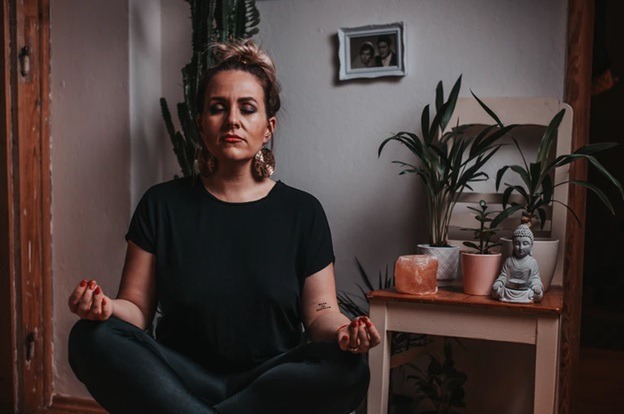Oftentimes, we experience that lack of motivation to get something done and we just couldn’t find the energy to start doing it. Even if we’ve tried ways of working ourselves to get motivated, still, the urge to be productive isn’t developing at all. The coping mechanisms we’ve relied on aren’t even effective anymore. So, what do we do when this scenario happens repetitively to the point of not being able to fulfill anything at all?
As much as it could be a drag for us to get something done, there are also chances where we’re able to discover new things and practices. It wouldn’t be much of a problem if we cannot stick to one habit. As long as the habits are healthy and working for us, then, there’s no need to worry about having to maintain them in the long run. It would be even better if those newly-discovered habits will bring us to practice self-love, establish a positive mindset and motivate ourselves to accomplish tasks. These habits should help us form a better version of ourselves. Once we’re ready to take on everything that comes, we produce a healthy environment that is safe for cultivating personal growth in our homes.
It is necessary to build a safe space for people to improve because it is part of developing maturity and open-mindedness. This also provides room for healthy practices such as time management, fitness exercise, and diet monitoring. These actions become part of your routine and in your lifestyle. Once you’ve successfully disciplined yourself to carry out such practices, these will become part of your system, wherein even if you’re not fully aware of doing those things, it is automatically registered in your mind to fulfill those actions. These will then affect everything around you, you’ll notice when people have become calm and relaxed as well as the circumstances have changed positively.
1. Having the willingness to build a safe physical environment
You’ve made a list of things to accomplish as well as promises engraved in your head stating that you’ll fulfill them within a given time frame, however, you’ve done nothing at all until now. What do you think is lacking? Are your goals wrong? Unattainable? Unsmart? Maybe, you are just not willing enough to accomplish them? Whatever’s on that list of yours, they won’t be done not unless you have enough willingness in you to get them done. Even if you feel the objectives you’ve indicated aren’t satisfying you, what’s important is that you still have that willingness to fulfill what is needed of you. Even the goals we’ve set could be the source of our suffering and stress which is why the need to reassess is needed too. To get those goals on the positive side, you have to channel them based on your willingness to accomplish them. In that manner, you contribute to building a space for growth and improvement.
2. Picking the appropriate location
Where do you intend to have your mindset improved? How would you like things to go to develop your progress? Start by indicating how you plan to utilize your wellness space. Detail the activities you find comfortable doing and the techniques you want to employ. Regardless of the purpose, your environment should be appropriate to hold such activities. Would you need a bigger area to draw some inspiration out from the things found within your surroundings? Or would you prefer to be in a quiet area to form or visualize your thoughts?
3. Removing unnecessary clutter and hindrances
It’s not easy to cultivate a wellness space because you have to account for the elements around you which could become factors of the thoughts being formed while carrying out your therapy or meditation. This calls for the removal of distractions to pursue peace and clarity. It’s easy to get distracted by things that don’t go well with your wellness space. As much as possible, remove everything that does not bring you relaxation and peace of mind. Include only the materials that are essential to the practices you will be doing to also avoid crowding the space.
4. Preserving natural elements
Whoever said that your wellness space entirely depends on you is wrong. This is because the things around are also key players when you begin your session. Checking the quality of the plants and natural lighting is important. Even the air quality and overall hygiene of the house should also be monitored. The visual quality of your home is also reflected in the thoughts we form during meditation.
5. Investing in additional home components
The material elements inside your house such as the decorations, ornaments, furniture, interior design, and layout of the rooms are factors that can make or break the meditation process. It is important to invest in these elements to achieve peace of mind and a positive mindset. This would then allow you to build the right atmosphere that you will need while concentrating on yourself.
6. Enhancing the overall atmosphere
During meditation, you rely heavily on your senses to form thoughts and perceptions. This means stimulating them can result in numerous benefits such as better processing of thoughts and clarity of mind. Select the aroma type that allows you to calm down and produce coherent thoughts.
Conclusion
Creating a reliable space for nurturing not only our mental health but also our physical one is necessary. You can start today by visiting the Maryland Mindfulness website to gain knowledge on how you can preserve a space intended for your mental and spiritual growth.

